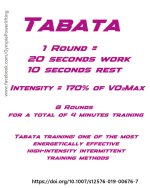Did not need to be the test subject today. Wingates are a good tool for seeing which areas of energy substrate may need work depending on athlete needs, I have done a Wingate before and had the classic energy usage of a power athlete as expected. The back to back results show how theory of 3-4 minutes rest is not actually enough, while ATP fully replenishes in that time peak power continues to drop despite full ATP recovery. That first 5-10 seconds is almost completely powered by ATP but the other substrates also need to recover after max power effort. As a powerlifter, this is not exactly new, this just demonstrates why powerlifters will rest for so long between sets at the gym. When I am in a peaking phase of training, rest between sets is around 10 minutes. The same requirement is found in sprint training, too short of a rest and you will not be generating the adaptations you want.
Week 11 is the lab work I am looking forward to, we get to dig into some cutting edge brand new research on metabolic flexibility and training to maximise fat loss, it is not all about just the calories burned. We want to be utilising fat stores to power our exercise, rather than spiking hormones and burning carbs. Training based on the science increases mitochondria and increases our ability to burn fat for energy, not just during exercise. (this scientific research is being used by tour de France winning athletes)
As a power athlete I am guilty of neglecting this side of my training, I don't utilise fat well for energy, even with a good diet. I need to look into some of the data my rower provide to see if I can adapt to using it as a makeshift field test to determine the important metabolic points training is based on. If I can turn my own training around, I can better help my non athlete clients with stubborn fat problems.

